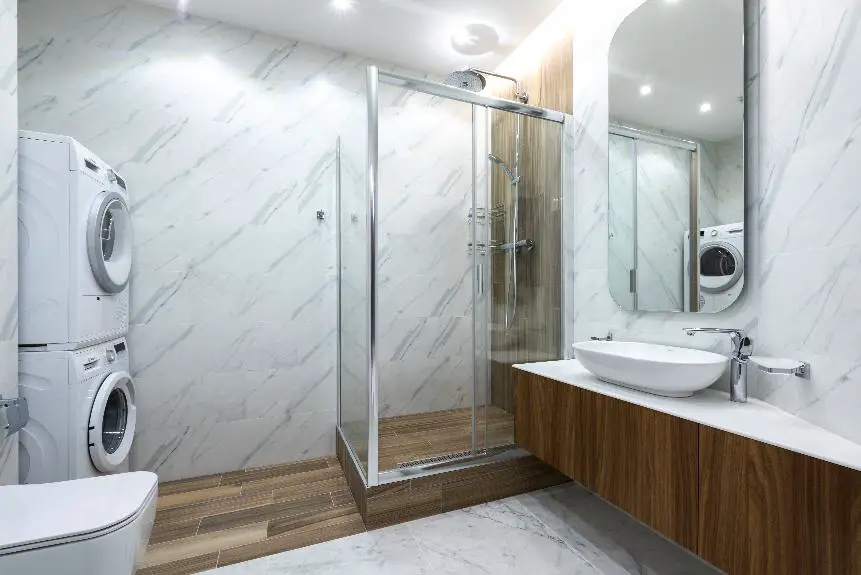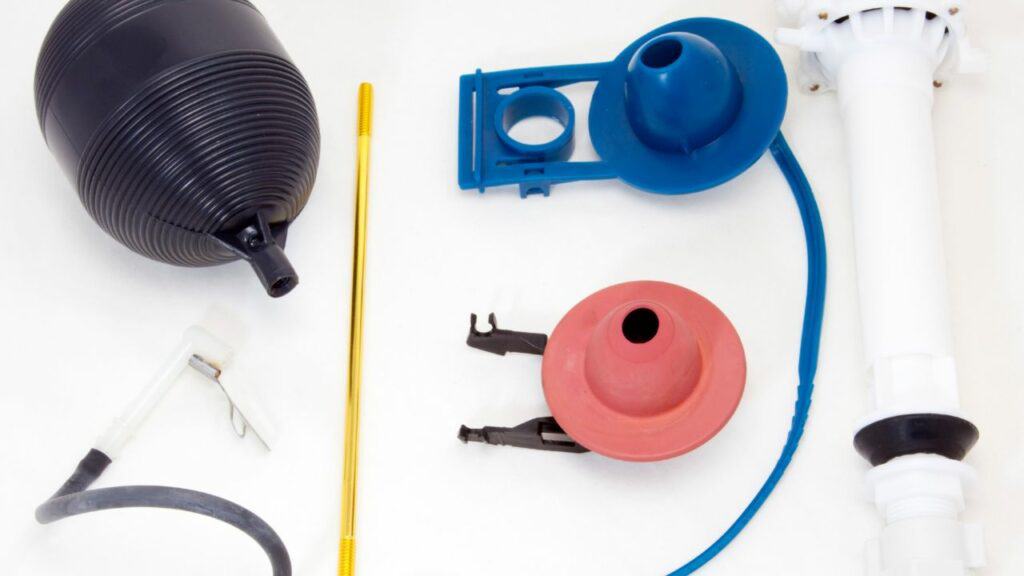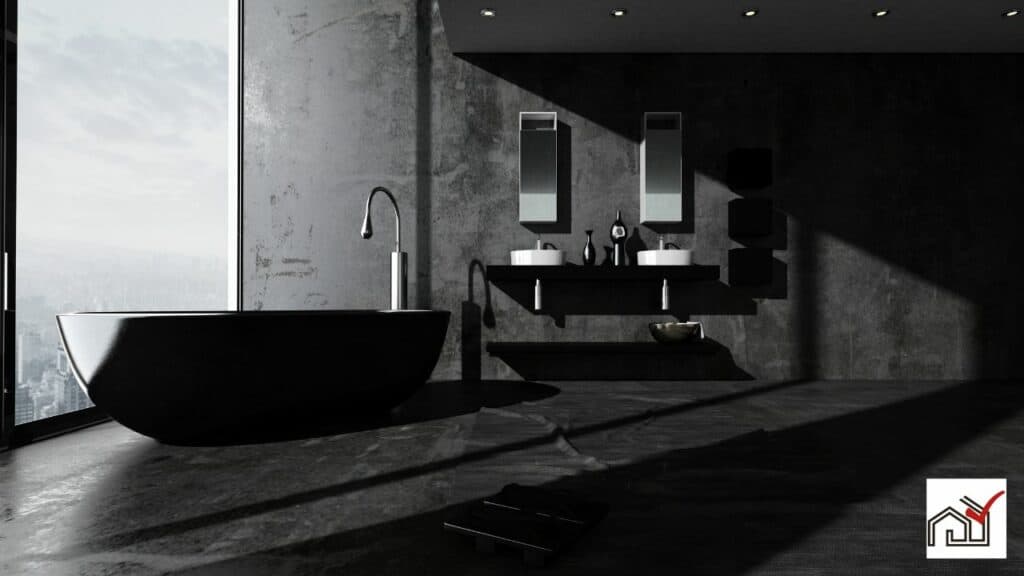A washer and a toilet can share the same drain if the pipe is at least 3 inches wide to handle the flow and avoid clogs. The setup must follow local plumbing codes and include a P-trap to keep out sewer gases.
This ensures the system works properly and stays clean.
Understanding Plumbing Basics
Understanding that a washing machine and toilet can share the same drain requires knowledge of basic residential plumbing. This system has two main parts: the water supply that brings fresh water in, and the drainage system that expels wastewater.
To determine if a washer and toilet can share a drain, one must consider plumbing codes. These codes define the standards for safely and effectively removing waste. The size of the trap arm, which connects a fixture to the trap, is crucial. Toilets generally need a 3-4 inch diameter pipe to handle waste and prevent clogs, while washers often use a 2 inch pipe.
The trap arm needs a proper slope to ensure water flows smoothly and avoids stagnation, which can cause odors. A vent pipe is also necessary to prevent airlocks that disrupt drainage. Correct vent installation is mandated by code, which includes specific technical requirements.
Washer and Toilet Drain Requirements
Washers and toilets require different considerations for a shared drain system. For proper functionality and to meet regulations, these differences must be understood. A washer drain often has less strict requirements than a toilet drain due to the different types of waste they handle.
When connecting a toilet to an existing washer drain or vice versa, the main concern is the drain line size. Plumbing codes usually require a 3-inch drain for toilets, which is sufficient for both appliances. If the washer's drain is smaller, it must be enlarged to meet this requirement.
Both the washer and the toilet must have a P-trap according to the Uniform Plumbing Code (UPC), which prevents sewer gases from entering the home. Additionally, a vent pipe is essential to avoid negative pressure that could remove water from the traps and to ensure waste moves smoothly through the drain.
Homeowners should consult a professional plumber for such installations to comply with local regulations, which may vary from the UPC. This compliance is crucial for the residents' health and safety and to prevent expensive plumbing issues in the future.
Potential Plumbing Challenges
Combining a washer and toilet drain presents several challenges. Proper venting is essential to prevent sewer gases from entering the home and to ensure good drainage. The toilet's vent must accommodate the extra load from the washing machine. An incorrectly sized vent can lead to drainage issues and affect the toilet's function.
The size of the drain pipe is also important. Washing machines typically require a 2-inch drain pipe, while toilets usually need a 3 or 4-inch pipe. Connecting both to the same drain without the right pipe size can cause clogs. A 1-inch drain, sometimes mentioned in discussions, is inadequate for either appliance. Additionally, each fixture should have its own P-trap for hygiene and functionality.
It is crucial to follow local plumbing codes, which differ by area. In the U.S., connecting a washer to a toilet drain is often not allowed. Plumbing codes aim to protect health and safety, and non-compliance can lead to fines or required fixes.
Homeowners should consult a professional plumber for guidance. A plumber can assess the existing plumbing system and make sure any changes comply with the local code and are safe and functional.
Code Compliance and Safety
Connecting a washer and toilet to the same drain must comply with local plumbing codes to ensure safety and legality. The Uniform Plumbing Code (UPC) sets standards for drain sizes, connections, and configurations to prevent backflow and clogs. Installers must follow these codes, particularly when setting up a sink P-trap, to block sewer gases and ensure proper wastewater flow.
Venting is also regulated by code. A proper vent system keeps water seals in traps intact and avoids airlocks that can impede drainage. Plumbing professionals often discuss venting and other topics on forums, emphasizing the importance of such platforms for sharing expertise and advice on code-compliant practices.
Specific to Massachusetts, the Massachusetts Plumbing and Gas regulations outline state-level requirements. For instance, a manual shallow well system or the use of Shark Bite fittings must conform to these standards for safety and durability.
While online resources are helpful, hiring a professional plumber is advisable. Professionals have the necessary knowledge to ensure that combining a washer and toilet drainage complies with all relevant codes and maintains the plumbing system's integrity.
Best Practices for Shared Drains
When setting up a shared drain system for a washing machine and toilet, it's important to follow local plumbing codes. The system must have a properly sized drain, at least 3 inches in diameter for the toilet, and correct venting to prevent blockages. Both installation and maintenance are critical for effective operation.
Proper venting keeps the air pressure balanced in the plumbing system, stops water in traps from being pulled away, and allows sewer gases to escape. It's important to prevent foreign objects or inappropriate materials from going down the drain to avoid clogs. Using strainers on washing machine hoses helps by catching lint and debris.
For blockages, a plunger or plumber's snake often works, but complex issues require a licensed plumber. Following these guidelines will help maintain a shared drain system effectively.




